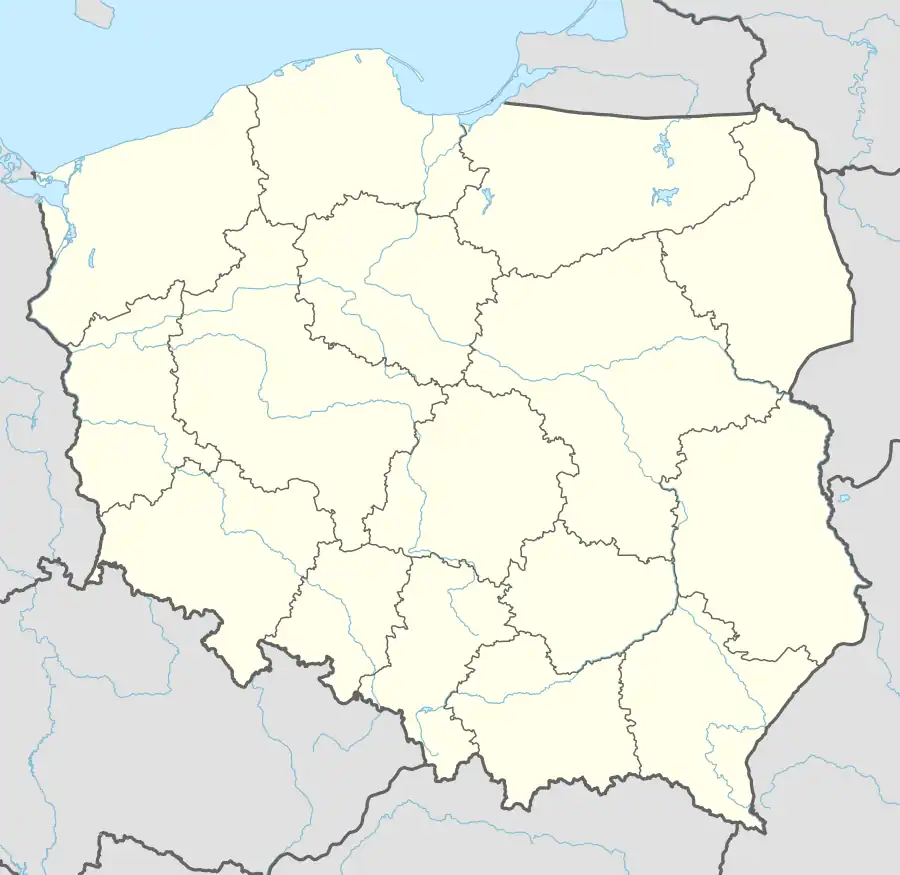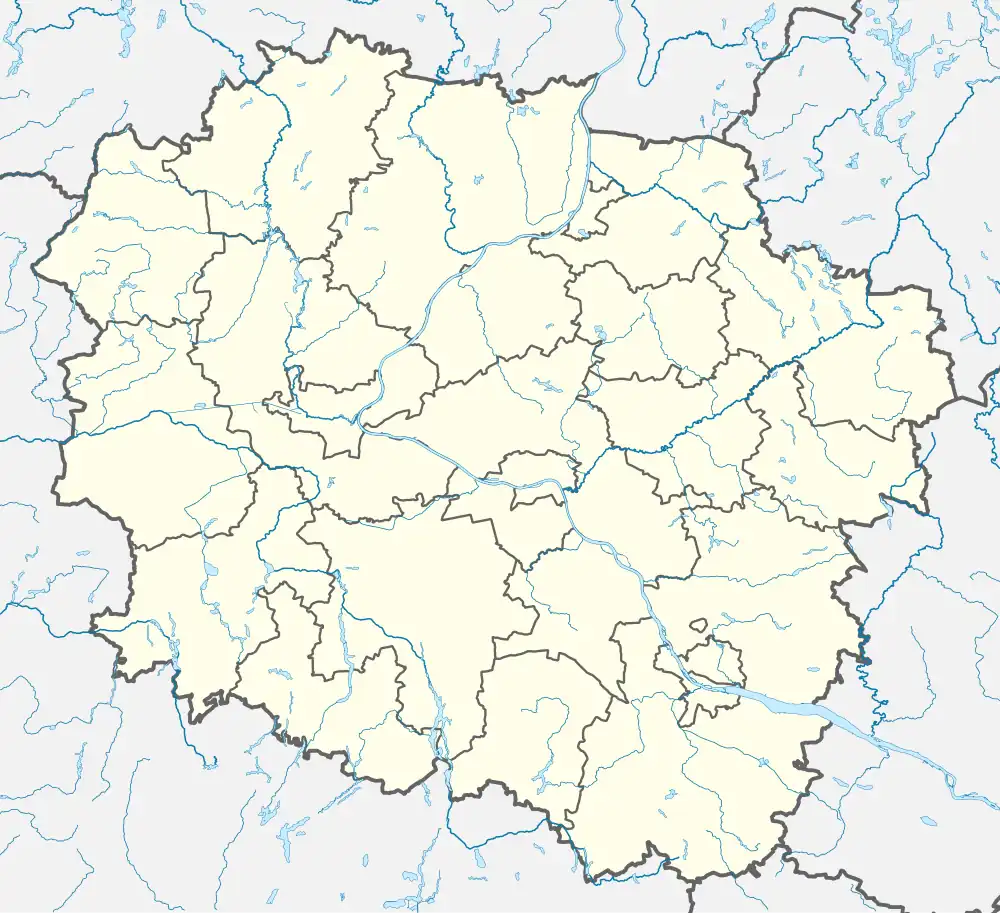Mała Nieszawka
Mała Nieszawka [ˈmawa ɲɛˈʂafka] is a village in the administrative district of Gmina Wielka Nieszawka, within Toruń County, Kuyavian-Pomeranian Voivodeship, in north-central Poland.[1] It lies approximately 4 kilometres (2 mi) east of Wielka Nieszawka and 7 km (4 mi) south-west of Toruń.
Mała Nieszawka | |
|---|---|
Village | |
.JPG.webp) Sacred Heart church in Mała Nieszawka | |
 Mała Nieszawka  Mała Nieszawka | |
| Coordinates: 52°59′22″N 18°33′13″E | |
| Country | |
| Voivodeship | Kuyavian-Pomeranian |
| County | Toruń County |
| Gmina | Wielka Nieszawka |
| Population | 1,400 |
| Time zone | UTC+1 (CET) |
| • Summer (DST) | UTC+2 (CEST) |
| Vehicle registration | CTR |
History
Polish–Teutonic peace talks, which ended the Thirteen Years' War, were held in the settlement at the turn of September and October 1466.[2]
During the German occupation (World War II), in November 1939, Polish teachers from Mała Nieszawka were murdered by the Germans in Barbarka (present-day district of Toruń) during a massacre of Polish teachers from the region carried out as part of the Intelligenzaktion.[3] Poles were also subjected to expulsions, carried out in November 1940.[4]
References
- "Central Statistical Office (GUS) – TERYT (National Register of Territorial Land Apportionment Journal)" (in Polish). 2008-06-01.
- Górski, Karol (1949). Związek Pruski i poddanie się Prus Polsce: zbiór tekstów źródłowych (in Polish). Poznań: Instytut Zachodni. p. LXXIV.
- Wardzyńska, Maria (2009). Był rok 1939. Operacja niemieckiej policji bezpieczeństwa w Polsce. Intelligenzaktion (in Polish). Warsaw: IPN. p. 162.
- Wardzyńska, Maria (2017). Wysiedlenia ludności polskiej z okupowanych ziem polskich włączonych do III Rzeszy w latach 1939-1945 (in Polish). Warsaw: IPN. p. 80. ISBN 978-83-8098-174-4.
